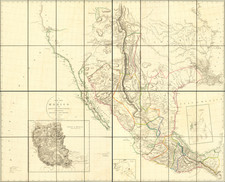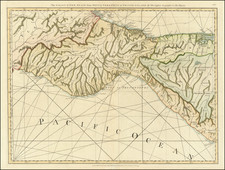An Aztec Tonalpohualli or Calendar Chart
A beautiful original watercolor by Captain William H. Shippard, after a page from the Codex Cospi, or Codex Bologna. The watercolor depicts a grid 7 by 13, with a total of 91 separate rectangular spaces each filled with at least one (sometimes two or more) glyphs representing either deity from the Aztec pantheon.
According to Elizabeth Hill Boone, the Codex Cospi is an Aztec almanac, with Tonalpohualli signs arranged in five rows of fifty-two signs, with mantic scenes above and below.
Tonalpohualli - Calendar as Spiritual Guide
The tonalpohualli, which translates to "count of days," is a significant component of the Mesoamerican calendrical system, particularly among the Aztec and other Nahua peoples. It is a 260-day ritual calendar consisting of 20 periods of 13 days, each represented by a unique combination of day signs and numerical coefficients. This calendar played a crucial role in the religious and ceremonial life of the Aztecs, dictating the timing of festivals, rituals, and other important events. The tonalpohualli is not only a method of measuring time but also a deeply spiritual tool, believed to influence the destiny of individuals based on their birth date within the calendar. Its significance extends beyond simple timekeeping, embodying the intricate interplay between cosmology, religion, and daily life in Aztec society.
William Henry Shippard's Mexican Paintings
William H. Shippard (1803-1865) was a pioneering 19th-century British museologist - an unsung progenitor of modern-day museum anthropology. While he is chiefly remembered as a friend of George Catlin, Shippard's profound interest in the ancient civilizations of Mexico connects him with a cohort of British contemporaries that include Lord Kingsborough and the showman William Bullock. Shippard's fascination with Mesoamerica propelled him to amass a significant collection of visual material derived from Aztec codices which he copied himself. A figure of some intrigue and scholarly ambition, Shippard endeavored to establish the Museum of Mankind in London, which seems to have evolved from his deep interest in early Mexican cultures. Although the museum did not come to fruition, Shippard's original artwork, mainly pen and ink drawings enriched with vibrant hand coloring, based on Mexican codices held in European libraries and collections, remains a valuable historical source, particularly for understanding the allure of Mexican antiquity within early 19th-century British collecting circles.
Capt. William H. Shippard, a friend of George Catlin and an avid watercolorist and museologist, was also a pioneering British Mesoamericanist. Shippard appears in British newspaper notices from the 1840s as a London-based lecturer who spoke about Native Americans and Mexican antiquities. We know he was a friend of George Catlin, and that he was involved in attempts to organize early London museum exhibitions of Mexican antiquities. In the latter efforts Shippard would seem to coincide with a group of like minded prominent English collectors interested in Mexican topics active during the 1820s and 1830s, including Lord Kingsborough and the bibliomaniac Sir Thomas Phillipps, among others. He seems to have been an armchair anthropologist and would-be museum founder, whose ambitious ideas for a London-based museum never got off the ground - at least not beyond the prospectus-printing stage. Certain aspects of Shippard's career are akin to William Bullock, the showman and connoisseur of Mexican antiquities who actually did travel to Mexico. Bullock published a notable book about his Mexican travels, and achieved a level of recognition in his day as the empresario of London's Egyptian Hall, wherein he thrilled large London audiences with his elaborate exhibitions of exotica, including Mexican items.









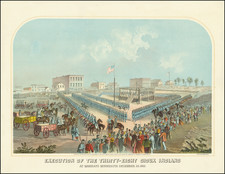
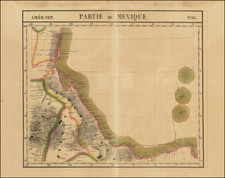
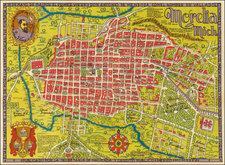
![[ Native Mexican Warrior ] Ein Mexicaner](https://storage.googleapis.com/raremaps/img/small/94089.jpg)
